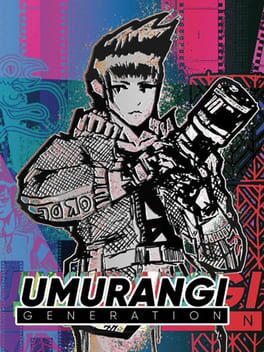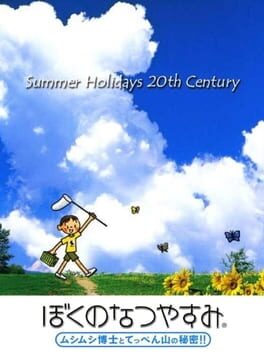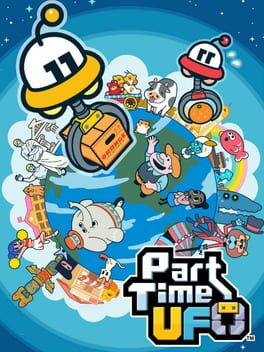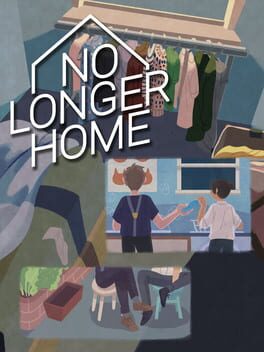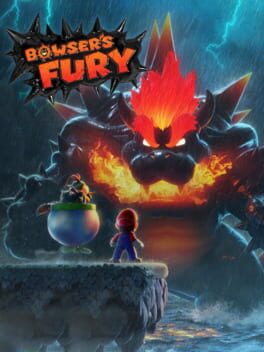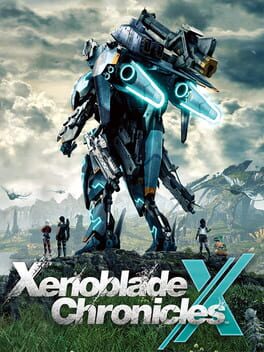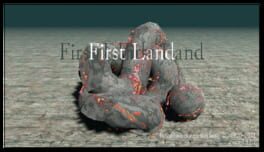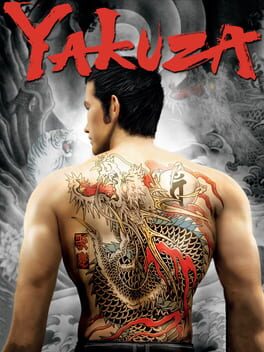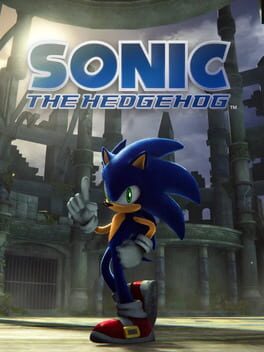2020
Umurangi generation is a game that wants you to observe and understand its world, its habitants and their situation using photography to capture it in your own way, but (sadly) failing miserably at it.
First off, what’s the point of making a game about observation and understanding if you add a 10min timer to the main game mode? What am I supposed to see and understand if I’m too busy searching for the stuff I need in order to go on? Oh my god. But that’s just the beginning: it’s also a game about doing what you’re told. Picture this and that, from this distance and with this lens, and we’ll give you 3 dollars for each picture if you’re lucky. Super punk stuff. Since time pretty much stands still, the world feels less like so and what you can capture with your camera is much less interesting. Having every character and object placed specifically for the player to see them and take some pictures like it’s some cyberpunk theme park seems kind of weird. Even the level design has some dubious decisions in form of object placement for the player to reach certain spots necessary to take some obligatory photos. It really makes you feel like an arbitrary being, almost like a god, observing without being seen, living without consequences, existing without feelings.
Now about the game commentary, specifically about the bias against the police forces. Fuck the police, ACAB, etc. (yes, I love politics not only in video games but also in video game reviews, fuck you) but in Umurangi they’re just doing what they’re told. There’s no abuse of power anywhere, no police brutality to be seen. They’re just guarding places, doing routine checks, shooting aliens and dying while the president is having some nice holidays somewhere else. Guess that’s what happens when the world stands still, losing context and perspective and therefore damaging its own ideas.
First off, what’s the point of making a game about observation and understanding if you add a 10min timer to the main game mode? What am I supposed to see and understand if I’m too busy searching for the stuff I need in order to go on? Oh my god. But that’s just the beginning: it’s also a game about doing what you’re told. Picture this and that, from this distance and with this lens, and we’ll give you 3 dollars for each picture if you’re lucky. Super punk stuff. Since time pretty much stands still, the world feels less like so and what you can capture with your camera is much less interesting. Having every character and object placed specifically for the player to see them and take some pictures like it’s some cyberpunk theme park seems kind of weird. Even the level design has some dubious decisions in form of object placement for the player to reach certain spots necessary to take some obligatory photos. It really makes you feel like an arbitrary being, almost like a god, observing without being seen, living without consequences, existing without feelings.
Now about the game commentary, specifically about the bias against the police forces. Fuck the police, ACAB, etc. (yes, I love politics not only in video games but also in video game reviews, fuck you) but in Umurangi they’re just doing what they’re told. There’s no abuse of power anywhere, no police brutality to be seen. They’re just guarding places, doing routine checks, shooting aliens and dying while the president is having some nice holidays somewhere else. Guess that’s what happens when the world stands still, losing context and perspective and therefore damaging its own ideas.
2000
For me, it’s almost impossible to remember the final plot twist in my favorite anime, the main character's name on the films I’ve recently watched, the 5th track of my most played album, the solution of that tricky puzzle or what I had for dinner two days ago. But 2 years after playing this game I remember fondly the moment I was finally able to get past the bees, the discovery of a cave, the homage to that family member, the transitions between some screens with the character jumping, the first encounter with another kid, how I was never home for dinner and someone always had to pick me up and so many more things. Boku no Natsuyasumi brings some of the purest, happiest memories I’ve had in recent years.
2021
What have we done wrong as a community to always expect a reward for everything we do?
Listen, I've read lots of people complaining about how pointless this game is and how it doesn't really do anything for you to keep playing. You plant seeds in order to grow Pikmin, then feed them. Those Pikmin will leave a trail of flowers behind you when you go for a walk. That's it.
But Pikmin Bloom is not a game about taking advantage of pikmins or about making your walks more exciting. Pikmin Bloom's sole purpose is to fill the world with flowers. Together, as a community. Whether you want to participate or not is up to you. If that's not one of the most beautiful things to ever happen in videogame history then I don't know what is.
Listen, I've read lots of people complaining about how pointless this game is and how it doesn't really do anything for you to keep playing. You plant seeds in order to grow Pikmin, then feed them. Those Pikmin will leave a trail of flowers behind you when you go for a walk. That's it.
But Pikmin Bloom is not a game about taking advantage of pikmins or about making your walks more exciting. Pikmin Bloom's sole purpose is to fill the world with flowers. Together, as a community. Whether you want to participate or not is up to you. If that's not one of the most beautiful things to ever happen in videogame history then I don't know what is.
Resources are now even more conveniently placed than they were. Before, if there was snow you'd find chilis nearby. Getting into a dangerous place? Here are some weapons. But now everything is there for you. This rock that previously was just lying around is now something you can use to build yourself a weapon. The bombs that were previously part of Link's device are now an item that only grows for Link to use it. Elemental items now are there to build elemental weapons. Arrows, berries... There are more than ever, because it's Link's only way to do things that he could previously do just fine. The world as a resource, not as a place.
The exaggerated gamification of everything that was previously in the game doesn't help either. You found a new place? Don't worry here's the name and your "New discovery" title so that you feel like you accomplished something. The two hundred wells across the map are no more than a different way to provide you with more resources. The minerals you find? They're another currency you exchange for more items. The poe, which are lost souls that you find in the underground? More currency to make your life easier there. The towers? They're not a a place to conquer anymore, but a chore: do this and that, talk to this person, get in from below. The batteries, wings, even the pots, are more items in your inventory that you get from a fucking gacha. It's the carrot and stick, clearer than ever. Congratulations, you are a donkey.
Sure, the new mechanics are great by themselves. But what can you do with Rewind that you could not with Stasis and some imagination? Did we really need Ascend in a game where you can climb virtually any surface? I get that being able to build giant mechs with auto-aim is super cool but how does that translate to the actual world and your interaction with it? When, realistically, are you going to need that and why? More importantly, how does the game give you the pieces needed to build that? Let me answer this last one: conveniently placed items in a clearly defined zone that you can recognise it from far away and a fucking gashapon. And only Link can make use of them. Where's the illusion of a world and the never-seen-before ecosystem? Which kind of place works like that? This is not a world anymore, it's a power fantasy. As imaginative as the new mechanics can be, they don't work in the context of the game because they were never necessary to begin with. They're the definition of over-engineering: trying to fix something that was never broken in order to justify the existence of a product that no one asked for and serves no purpose. If you look at each element by itself it's hard to argue that they're not fun and entertaining because it's small little challenges and rewards that move you forward built on top of well made systems that have already been proven to work in a full game, but is that really enough? Everything in the game works in a vacuum because, in the end, everything is based well-thought, well-built mechanics on top of something that we found marvelous and fascinating when we first experienced this in 2017. But where's the charm? Where's the spark? Where's the wonder? Is there any real thought behind it other than mindlessly expanding what we previously saw? What's really new to experience or how do our new ways of interaction make Hyrule seem fascinating and challenging again?
Not only is it greatly flawed but, fundamentally, TOTK feels the same as BOTW. And thus it doesn't.
The exaggerated gamification of everything that was previously in the game doesn't help either. You found a new place? Don't worry here's the name and your "New discovery" title so that you feel like you accomplished something. The two hundred wells across the map are no more than a different way to provide you with more resources. The minerals you find? They're another currency you exchange for more items. The poe, which are lost souls that you find in the underground? More currency to make your life easier there. The towers? They're not a a place to conquer anymore, but a chore: do this and that, talk to this person, get in from below. The batteries, wings, even the pots, are more items in your inventory that you get from a fucking gacha. It's the carrot and stick, clearer than ever. Congratulations, you are a donkey.
Sure, the new mechanics are great by themselves. But what can you do with Rewind that you could not with Stasis and some imagination? Did we really need Ascend in a game where you can climb virtually any surface? I get that being able to build giant mechs with auto-aim is super cool but how does that translate to the actual world and your interaction with it? When, realistically, are you going to need that and why? More importantly, how does the game give you the pieces needed to build that? Let me answer this last one: conveniently placed items in a clearly defined zone that you can recognise it from far away and a fucking gashapon. And only Link can make use of them. Where's the illusion of a world and the never-seen-before ecosystem? Which kind of place works like that? This is not a world anymore, it's a power fantasy. As imaginative as the new mechanics can be, they don't work in the context of the game because they were never necessary to begin with. They're the definition of over-engineering: trying to fix something that was never broken in order to justify the existence of a product that no one asked for and serves no purpose. If you look at each element by itself it's hard to argue that they're not fun and entertaining because it's small little challenges and rewards that move you forward built on top of well made systems that have already been proven to work in a full game, but is that really enough? Everything in the game works in a vacuum because, in the end, everything is based well-thought, well-built mechanics on top of something that we found marvelous and fascinating when we first experienced this in 2017. But where's the charm? Where's the spark? Where's the wonder? Is there any real thought behind it other than mindlessly expanding what we previously saw? What's really new to experience or how do our new ways of interaction make Hyrule seem fascinating and challenging again?
Not only is it greatly flawed but, fundamentally, TOTK feels the same as BOTW. And thus it doesn't.
2022
Even though its references are obvious at first glance and more obvious once you start playing, Tunic doesn’t feel at all like any of them. And contrary to what you might think, that’s a bad thing. Let me explain.
Yes, it plays like a Zelda, and Zelda 1 has been referenced many, many times by other texts for obvious reasons like the lack of gimmicky dungeons, the hidden secrets, the apparent simplicity of the gameplay… it even tries to replicate the experience of playing with a manual and taking notes in order to progress and have a better understanding of the whole thing. But it fails so miserably. The world is over-designed, abusing connections between locations, teleports, save points… The sense of discovery and adventure vanishes when there’s hardly any sense danger except for bosses and occasional fights and, in case of trouble, you will respawn in the latest save point activated (which by the way you can use even when surrounded by enemies) so there’s virtually no loss of progress.
Tunic also never gets close to the feeling of having to figure the hell out of your path in order to your destination. There’s no hidden doors or passages that are necessary to progress through any of the dungeons or important locations, all the layouts are straight forward and it ends up feeling more like a modern Zelda just without puzzles to solve. Instead, there’s always locked doors with a handle next to it and at most you’ll have to fight a bunch of minions or reach it from a different place because the path is locked. What’s most worrying for me, though, is the fact that even if the dungeons themselves don’t have puzzles or gimmicks in the traditional sense (except for one that I can recall), the world itself is built around those gimmicks in a really gamey, artificial manner, hiding rewards and blocking your progress behind unreachable places if you don’t have the necessary items or power ups like the hook or the dash.
You'll also see people talk about Dark souls but honestly at this point it seems like a joke to me that people think of the game when something has stamina, bosses and bonfire-like save points. FEZ has been said to be closer to what Tunic wants to dobut this is not as mystic, magical, obtuse, imaginative, with its craziest puzzles and challenges being better integrated into the world, less gamey. For instance, both the famous Golden Path and the mechanism to activate the mysterious monoliths and doors spread throughout the world (by following a sequence of d-pad presses that have no other utility, quite underwhelming) are revealed in the manual at some point. Which brings me to the next point: why is it there in the first place? What sense does it make in the context of the game and its world? What’s fun about having pages giving you hints or sometimes really clear explanations about where you are, where to go, how its systems work, which buttons do what, how to perform certain actions or where to find things? Wasn’t the point to explore a mystical world with lots of secrets to find and emulate the old experience of exchanging information with other people, taking notes, having to figure out things… ? And why is it both in our language and the game’s language, emulating a lost manuscript that you have to gather by exploring and overcoming challenges, in a way that doesn’t feel natural at all? The point of having a manual is being able to understand it, the point of having old manuscripts is not being able to understand them, but this in-between with words written in both languages, plus the bland foreshadowing, button mappings and game system explanations, handy little hints every once in a while etc just doesn't make any sense.
But there’s great stuff like The Quarry. Everything about that zone, from its perspective-shifting presentation (very cinematic) showing the giant door you have to reach. The place is full of enemies who attack you from different ranges and heights and show different behaviours when you approach them. They all gather around corruption, some weird purple-ish liquid that’s either just there or emanating from ancient monoliths, and that corruption shrinks your health bar (yes, your health bar, not your hp) making you play safer, experiment with the different items and power ups, manage the distances and so-on. Everything’s cool except for the existence of certain item that grants invulnerability to corruption unless you touch it. It was too good to be true.
Yes, it plays like a Zelda, and Zelda 1 has been referenced many, many times by other texts for obvious reasons like the lack of gimmicky dungeons, the hidden secrets, the apparent simplicity of the gameplay… it even tries to replicate the experience of playing with a manual and taking notes in order to progress and have a better understanding of the whole thing. But it fails so miserably. The world is over-designed, abusing connections between locations, teleports, save points… The sense of discovery and adventure vanishes when there’s hardly any sense danger except for bosses and occasional fights and, in case of trouble, you will respawn in the latest save point activated (which by the way you can use even when surrounded by enemies) so there’s virtually no loss of progress.
Tunic also never gets close to the feeling of having to figure the hell out of your path in order to your destination. There’s no hidden doors or passages that are necessary to progress through any of the dungeons or important locations, all the layouts are straight forward and it ends up feeling more like a modern Zelda just without puzzles to solve. Instead, there’s always locked doors with a handle next to it and at most you’ll have to fight a bunch of minions or reach it from a different place because the path is locked. What’s most worrying for me, though, is the fact that even if the dungeons themselves don’t have puzzles or gimmicks in the traditional sense (except for one that I can recall), the world itself is built around those gimmicks in a really gamey, artificial manner, hiding rewards and blocking your progress behind unreachable places if you don’t have the necessary items or power ups like the hook or the dash.
You'll also see people talk about Dark souls but honestly at this point it seems like a joke to me that people think of the game when something has stamina, bosses and bonfire-like save points. FEZ has been said to be closer to what Tunic wants to dobut this is not as mystic, magical, obtuse, imaginative, with its craziest puzzles and challenges being better integrated into the world, less gamey. For instance, both the famous Golden Path and the mechanism to activate the mysterious monoliths and doors spread throughout the world (by following a sequence of d-pad presses that have no other utility, quite underwhelming) are revealed in the manual at some point. Which brings me to the next point: why is it there in the first place? What sense does it make in the context of the game and its world? What’s fun about having pages giving you hints or sometimes really clear explanations about where you are, where to go, how its systems work, which buttons do what, how to perform certain actions or where to find things? Wasn’t the point to explore a mystical world with lots of secrets to find and emulate the old experience of exchanging information with other people, taking notes, having to figure out things… ? And why is it both in our language and the game’s language, emulating a lost manuscript that you have to gather by exploring and overcoming challenges, in a way that doesn’t feel natural at all? The point of having a manual is being able to understand it, the point of having old manuscripts is not being able to understand them, but this in-between with words written in both languages, plus the bland foreshadowing, button mappings and game system explanations, handy little hints every once in a while etc just doesn't make any sense.
But there’s great stuff like The Quarry. Everything about that zone, from its perspective-shifting presentation (very cinematic) showing the giant door you have to reach. The place is full of enemies who attack you from different ranges and heights and show different behaviours when you approach them. They all gather around corruption, some weird purple-ish liquid that’s either just there or emanating from ancient monoliths, and that corruption shrinks your health bar (yes, your health bar, not your hp) making you play safer, experiment with the different items and power ups, manage the distances and so-on. Everything’s cool except for the existence of certain item that grants invulnerability to corruption unless you touch it. It was too good to be true.
2017
Part Time UFO is a “puzzle game” about piling up things (not necessarily objects) where the challenge is not in the puzzle itself but in the character movement. In my head it’s like a “construction” flash game with the physics of the first Super Mario.
Why Super Mario? Because contrary to what one might think given the physics-based premise, the game isn’t really about finding the perfect balance when placing the pieces on top of each other, but about maintaining control of the UFO. Each piece you carry has an impact on the controls: its weight makes you loose speed and gain inertia, making it hard to carefully place the piece in the right spot. Basically, the piece is dragging you, not the other way around. The faster you go, the more you swing, which means there’s a chance that the piece will slip and fall, causing you to fly down to pick it up again or even worse, destroying the tower you had already built. You also have to be careful when dropping it in place since if it carries too much momentum, there’s a high chance the tower will lose its balance and fall.
Well then, play slowly and that’s it, right? Fortunately it’s not that easy because there is a timer.
I wish the progress didn’t depend on getting extra badges from each level’s additional challenges, and I’m also not a fan of the cosmetics (though purely visual and paid only with in-game money) but other than that, I’ve got to say it’s pretty brilliant.
Why Super Mario? Because contrary to what one might think given the physics-based premise, the game isn’t really about finding the perfect balance when placing the pieces on top of each other, but about maintaining control of the UFO. Each piece you carry has an impact on the controls: its weight makes you loose speed and gain inertia, making it hard to carefully place the piece in the right spot. Basically, the piece is dragging you, not the other way around. The faster you go, the more you swing, which means there’s a chance that the piece will slip and fall, causing you to fly down to pick it up again or even worse, destroying the tower you had already built. You also have to be careful when dropping it in place since if it carries too much momentum, there’s a high chance the tower will lose its balance and fall.
Well then, play slowly and that’s it, right? Fortunately it’s not that easy because there is a timer.
I wish the progress didn’t depend on getting extra badges from each level’s additional challenges, and I’m also not a fan of the cosmetics (though purely visual and paid only with in-game money) but other than that, I’ve got to say it’s pretty brilliant.
2017
2021
2021
Bowser’s Fury shares with 3d Land and 3d World (and the 2d Marios) its approach to platforming-based level design: no more seemingly real but totally unfeasible locations, instead every island (or bunch of islands) in the vast ocean is its own level, and close islands share themes. Of course these islands, in classic Nintendo fashion, are not all accessible since the beginning and instead you unlock chunks of the map after fighting Bowser, which requires the player to collect X Shines, creating a gameplay loop similar to Odyssey. This, though, is not the only similarity between both games: they are way more fun if you play them in “unintended” ways, using Mario’s moveset or alternative powerups (or captures) to your advantage, which by the way is not always possible thanks to some gimmicks and requirements.
While Odyssey was more focused on exploration and interaction than actual platforming here there’s only the latter, and it’s quite bland and inoffensive. The world in Bowser’s Fury is mostly empty and navigating between islands is really uninteresting, so the fact that level design mostly relies on repeating the same really short, easy challenges with slight variations is pretty underwhelming. To the uninteresting level design with really scarce threats you have to add the new inventory system, whichs lets you collect as many powerups as you want and use them conveniently, anytime anywhere. This is the reason why the levels involving helicopter blocks (which is not a powerup like in the New Super Mario Bros series) and keys that you have to bring to the beginning of the level, making you traverse it backwards, are by far the most fun in the game. Holding objects ignores active powerups and limits Mario's movement to the basic running and jumping, making the level design way more challenging and expressive, plus flying with the helicopter block across vertical levels with floating buildings, moving platforms and aerial threats is honestly one of the best times I've had with any modern Mario game.
The thing that was supposed to bring everything together and add some spice is the black, giant Bowser who will periodically wake up from his sleep and attack Mario, but instead of surprising you and forcing you to improvise there’s a clear procedure to this whole thing. When he’s about to appear the music changes, the sky turns black and it starts raining. And it happens so often that it turns into a routine. Bowser will jump from one place to the other and throw flames at you while rocks fall from the sky so that you cannot just hide in one spot and wait for him to leave, but after a couple of cycles he will disappear and you can just resume whatever you were doing. In addition, there are blocks with Bowser’s face all over the world hiding Shines (most of the time) and he is the only one who can destroy them, worsening the already washed out encounters and becoming more of a tool than an actual threat. Transforming into the giant Cat Mario and fighting Bowser in order to progress is quite anecdotic and not much different than the usual Mario boss fight: they're bad. I still believe this was a good idea and the variation it brings to your approach of the levels is more than welcome, but it definitely was not the right approach.
To be fair, it's not that I didn't enjoy my time with the game. Everyone knows that jumping is by far the best mechanic in videogames and no one does it better than Mario. But I wish the game was more than the old Mario drowned into a bunch of mechanics and ideas that don't work together nor by themselves.
While Odyssey was more focused on exploration and interaction than actual platforming here there’s only the latter, and it’s quite bland and inoffensive. The world in Bowser’s Fury is mostly empty and navigating between islands is really uninteresting, so the fact that level design mostly relies on repeating the same really short, easy challenges with slight variations is pretty underwhelming. To the uninteresting level design with really scarce threats you have to add the new inventory system, whichs lets you collect as many powerups as you want and use them conveniently, anytime anywhere. This is the reason why the levels involving helicopter blocks (which is not a powerup like in the New Super Mario Bros series) and keys that you have to bring to the beginning of the level, making you traverse it backwards, are by far the most fun in the game. Holding objects ignores active powerups and limits Mario's movement to the basic running and jumping, making the level design way more challenging and expressive, plus flying with the helicopter block across vertical levels with floating buildings, moving platforms and aerial threats is honestly one of the best times I've had with any modern Mario game.
The thing that was supposed to bring everything together and add some spice is the black, giant Bowser who will periodically wake up from his sleep and attack Mario, but instead of surprising you and forcing you to improvise there’s a clear procedure to this whole thing. When he’s about to appear the music changes, the sky turns black and it starts raining. And it happens so often that it turns into a routine. Bowser will jump from one place to the other and throw flames at you while rocks fall from the sky so that you cannot just hide in one spot and wait for him to leave, but after a couple of cycles he will disappear and you can just resume whatever you were doing. In addition, there are blocks with Bowser’s face all over the world hiding Shines (most of the time) and he is the only one who can destroy them, worsening the already washed out encounters and becoming more of a tool than an actual threat. Transforming into the giant Cat Mario and fighting Bowser in order to progress is quite anecdotic and not much different than the usual Mario boss fight: they're bad. I still believe this was a good idea and the variation it brings to your approach of the levels is more than welcome, but it definitely was not the right approach.
To be fair, it's not that I didn't enjoy my time with the game. Everyone knows that jumping is by far the best mechanic in videogames and no one does it better than Mario. But I wish the game was more than the old Mario drowned into a bunch of mechanics and ideas that don't work together nor by themselves.
2021
This review contains spoilers
You know the type of game which seems like a succession of random exploration sections and calm, meditative walks with enigmatic conversations but then you arrive at an island that is not really an island because there’s no water around it but an endless terrain where you literally have to learn a new language in order to leave, accept all of your traumas and finish the game? Well this is the best of its kind.
2022
2005
In Yakuza you play as Kazama Kiryu, one tough ass yakuza who used to extort people in order to get what he's told to by his clan's boss. One day he gets in prison for something he didn't do. After getting out of it, the same city that had forgot about his existence during those 10 years in prison suddenly revolves around him and pretty much every interaction within the Kabuki-chō district is the same: someone approaches you acting all mighty and you fight.
Everyone, inside and outside the game, knows the yakuza are bad; but you know, Kiryu is different because he doesn't only protect his loved ones, but also a random kid he finds -though he fights in front of her like it's ok to do so-. In fact, all you do in the game is beat the shit out of anyone who comes near you, doesn't matter who that is or what the situation actually demands. This apples to pretty much anything in the game. But what bothers me is how biased it is: different people are portrayed and judged differently for doing the same exact thing. For * sake, they're all * Yakuza.
Finally, since this always happens, I'm going to address it directly: even though one could argue that the game shouldn’t be taken so seriously since there’s all these fun, hilarious quests and situations spread throughout all of Kabuki-chō, but I’d say the game itself makes a really clear distinction between all of that and what’s actually important. And honestly it’s not like you can just judge both things separately, they’re two sides of the same coin.
Everyone, inside and outside the game, knows the yakuza are bad; but you know, Kiryu is different because he doesn't only protect his loved ones, but also a random kid he finds -though he fights in front of her like it's ok to do so-. In fact, all you do in the game is beat the shit out of anyone who comes near you, doesn't matter who that is or what the situation actually demands. This apples to pretty much anything in the game. But what bothers me is how biased it is: different people are portrayed and judged differently for doing the same exact thing. For * sake, they're all * Yakuza.
Finally, since this always happens, I'm going to address it directly: even though one could argue that the game shouldn’t be taken so seriously since there’s all these fun, hilarious quests and situations spread throughout all of Kabuki-chō, but I’d say the game itself makes a really clear distinction between all of that and what’s actually important. And honestly it’s not like you can just judge both things separately, they’re two sides of the same coin.
2003
Why repeat the same boring repetitive chapters just to get 4 lines of kinda mid dialogue and a cgi cinematic every once in a while? Why would I want to explore searching for weapons if the missions’ action is very condensed and the maps are not designed for that? Why should I want them weapons if the combat sucks and playing with the same weapon is rewarded? Why do I need to follow a guide to avoid playing the game twice if it is so good? Really nice atmosphere but honestly full of stupid design decisions.
2019
